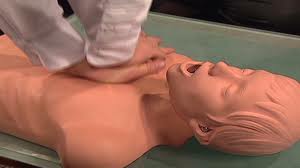A stranger or a loved one suddenly collapses and is unconscious on the ground. What do you do? If you are caught by surprise, you could just call 911, just try to wake the person up, and do nothing aside from that. This would aggravate the situation because a person who loses consciousness should be checked for breathing and pulse. Breathing and circulation should be maintained until proper medical help arrives.
For years, basic CPR is learned and performed. The goal of doing so is to make sure that people know what to do in times of a health emergency. It is common for anyone to suddenly lose consciousness because of a heart attack or an accident. You should always update yourself with the proper ways to perform CPR if ever there comes a time when you will be the only possible individual to do it.
Many medical institutions require their staff to know all about the proper administration of CPR or cardiopulmonary resuscitation. What kind of hospital or clinical staff would you be if you do not know CPR, right? Nowadays, even ordinary students or professionals are trained to do CPR. The goal is to lessen the number of fatalities due to unavailability of proper and immediate CPR administration a few minutes before the emergency medical team arrives.
As of the eighteenth of October, 2010, the American Heart Association already recommended that the three basic steps in CPR must be rearranged. Before, it used to be A-B-C or airway, breathing, compressions. The new CPR tells you to do the chest compressions first before establishing airway. Mouth-to-mouth follows after. This applies to new CPR for infants (excluding newborns), children, and adults. With this, new CPR is C-A-B or compressions, airway, breathing.
According to Michael R. Sayre, MD, author of the 2010 AHA Guidelines for CPR and Emergency Cardiovascular Care, if you start with chest compressions, everything is easier to remember and apply. The old CPR practice delays the chest compressions, thus delaying the circulation or oxygenated blood that is important in the lifesaving part of the practice. Even with the new CPR, mouth-to-mouth is still not required. It is the part of doing chest compressions that is emphasized more. It is easier to do and with the oxygen reserve in the patient’s system, just doing chest compressions will save his or her life already. Here are the steps to the new CPR practice that you should administer at any given time:
1. Emergency call
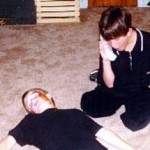 In the new CPR practice, you should still call 911 or ask a bystander to do it while you perform the steps on the patient.
In the new CPR practice, you should still call 911 or ask a bystander to do it while you perform the steps on the patient.
2. Regain consciousness
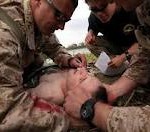 You should try your best to make the patient responds to you. In the new CPR, it is still important for you to call on the person and try your best to get him or her to acknowledge you there. If the patient is unresponsive, your should roll the patient on the back.
You should try your best to make the patient responds to you. In the new CPR, it is still important for you to call on the person and try your best to get him or her to acknowledge you there. If the patient is unresponsive, your should roll the patient on the back.
3. Compressions
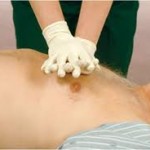 Immediately start the chest compressions by placing the heel of the hand at the center or middle of the patient’s chest. Interlace your fingers by placing your other hand on top of the positioned hand.
Immediately start the chest compressions by placing the heel of the hand at the center or middle of the patient’s chest. Interlace your fingers by placing your other hand on top of the positioned hand.
4. Rhythm
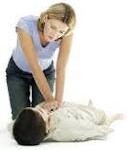 You should then press down on the chest. Go 1 and ½ inches deep in infants and about 2 inches in children and adults. It is vital for you to maintain the compressions at a hundred times per minute or much faster. In the new CPR, just play the song “Stayin’ Alive†in your head as you do this.
You should then press down on the chest. Go 1 and ½ inches deep in infants and about 2 inches in children and adults. It is vital for you to maintain the compressions at a hundred times per minute or much faster. In the new CPR, just play the song “Stayin’ Alive†in your head as you do this.
5. Airway
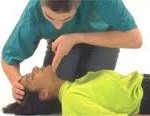 After the vital chest compressions, you can then open the airway with the head tilt, chin lift technique. This can be done easily by those trained with CPR before.
After the vital chest compressions, you can then open the airway with the head tilt, chin lift technique. This can be done easily by those trained with CPR before.
6. Emergency breaths
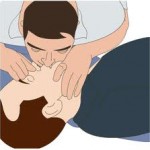 The new CPR tells you to start giving emergency breaths at this point by pinching the patient’s nose first. Take a breath and then cover your patient’s mouth with your mouth. This creates a seal that will ensure the continuous provision of airflow. Two one-second breaths should be given. Watch for the rise and fall of the patient’s chest.
The new CPR tells you to start giving emergency breaths at this point by pinching the patient’s nose first. Take a breath and then cover your patient’s mouth with your mouth. This creates a seal that will ensure the continuous provision of airflow. Two one-second breaths should be given. Watch for the rise and fall of the patient’s chest.
7. Continue
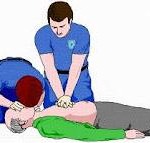 Continue providing the chest compressions and emergency breaths. Give about 30Â chest compressions and then two emergency breaths after. Keep this rhythm until emergency help gets to the scene.
Continue providing the chest compressions and emergency breaths. Give about 30Â chest compressions and then two emergency breaths after. Keep this rhythm until emergency help gets to the scene.
The new CPR technique focuses more on the immediate continuation of the patient’s circulation. This will increase the survival rate during medical emergencies because the brain and other tissues had a steady oxygen supply even before help arrives. Ask your medical institution or school for an update in your CPR training so that you can be more efficient in saving lives on the spot.
